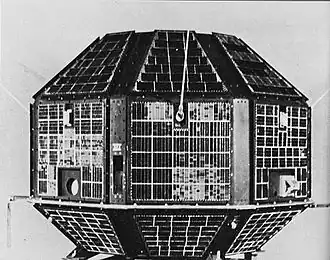IRNSS-1C
| Mission type | Navigation |
|---|---|
| Operator | ISRO |
| COSPAR ID | 2014-061A |
| SATCAT no. | 40269 |
| Mission duration | 10 years[1] |
| Spacecraft properties | |
| Spacecraft | IRNSS-1D |
| Bus | I-1K |
| Manufacturer | ISRO Satellite Centre Space Applications Centre |
| Launch mass | 1,424.5 kilograms (3,140 lb)[1] |
| Dry mass | 598 kilograms (1,318 lb) |
| Power | 1,660 W[1] |
| Start of mission | |
| Launch date | 15 October 2014, 20:02 UTC |
| Rocket | PSLV-XL C26 |
| Launch site | Satish Dhawan FLP |
| Contractor | ISRO |
| Orbital parameters | |
| Reference system | Geocentric |
| Regime | Geostationary |
| Longitude | 83° East[1] |
| Perigee altitude | 35,697 kilometres (22,181 mi)[2] |
| Apogee altitude | 35,889 kilometres (22,300 mi)[2] |
| Inclination | 4.78 degrees[2] |
| Period | 1436.12 minutes[2] |
| Epoch | 23 January 2015, 21:16:09 UTC[2] |
IRNSS-1C is the third out of seven in the Indian Regional Navigation Satellite System (IRNSS) series of satellites after IRNSS-1A and IRNSS-1B. The IRNSS constellation of satellites is slated to be launched to provide navigational services to the region. It was launched on 15 October 2014 at 20:02 UTC by PSLV-C26 and will be placed in geostationary orbit.[1][3][4]
Satellite
The satellite will help augmenting the satellite based navigation system of India which is currently under development. The navigational system so developed will be a regional one targeted towards South Asia. The satellite will provide navigation, tracking and mapping services.[5]
IRNSS-1C satellite will have two payloads: a navigation payload and CDMA ranging payload in addition with a laser retro-reflector. The payload generates navigation signals at L5 and S-band. The design of the payload makes the IRNSS system inter-operable and compatible with Global Positioning System (GPS) and Galileo systems.[3] The satellite is powered by two solar arrays, which generate up to 1,660 watts, and has a life-time of ten years.
IRNSS-1C was launched successfully on 16 October 2014 at 1:32 am IST from Satish Dhawan Space Centre in Sriharikota.[6] An update from ISRO's official Facebook page on 18 October 2014 states that
Navigation Satellite IRNSS 1C Update:
The second orbit raising operation of IRNSS-1C is successfully completed by firing the Apogee Motor for 1,563 seconds. The current orbital parameters are:
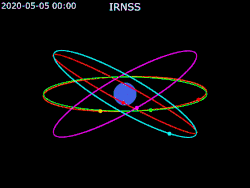
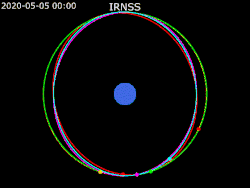
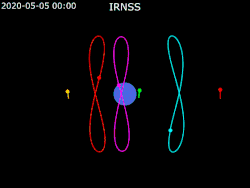
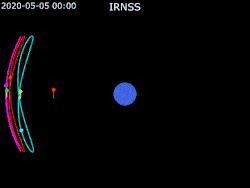

See also
- Communication-Centric Intelligence Satellite (CCI-Sat)
- GPS-aided geo-augmented navigation (GAGAN)
- Satellite navigation
References
- ^ a b c d e "PSLV-C26/IRNSS-1C" (PDF). Archived from the original (PDF) on 21 October 2014. Retrieved 16 October 2014.
- ^ a b c d e "IRNSS 1C Satellite details 2014-061A NORAD 40269". N2YO. 23 January 2015. Retrieved 25 January 2015.
- ^ a b "IRNSS". space.skyrocket.de. Retrieved 6 December 2014.
- ^ Ravikiran, G. (16 October 2014). "India launches third navigation satellite". The Hindu. Retrieved 16 October 2014.
- ^ "ISRO: After GSLV launch, PSLV C24 with IRNSS-1B likely in March". India. 5 January 2014. Retrieved 6 January 2014.
- ^ Ravikiran, G. (16 October 2014). "India launches third navigation satellite". The Hindu.

